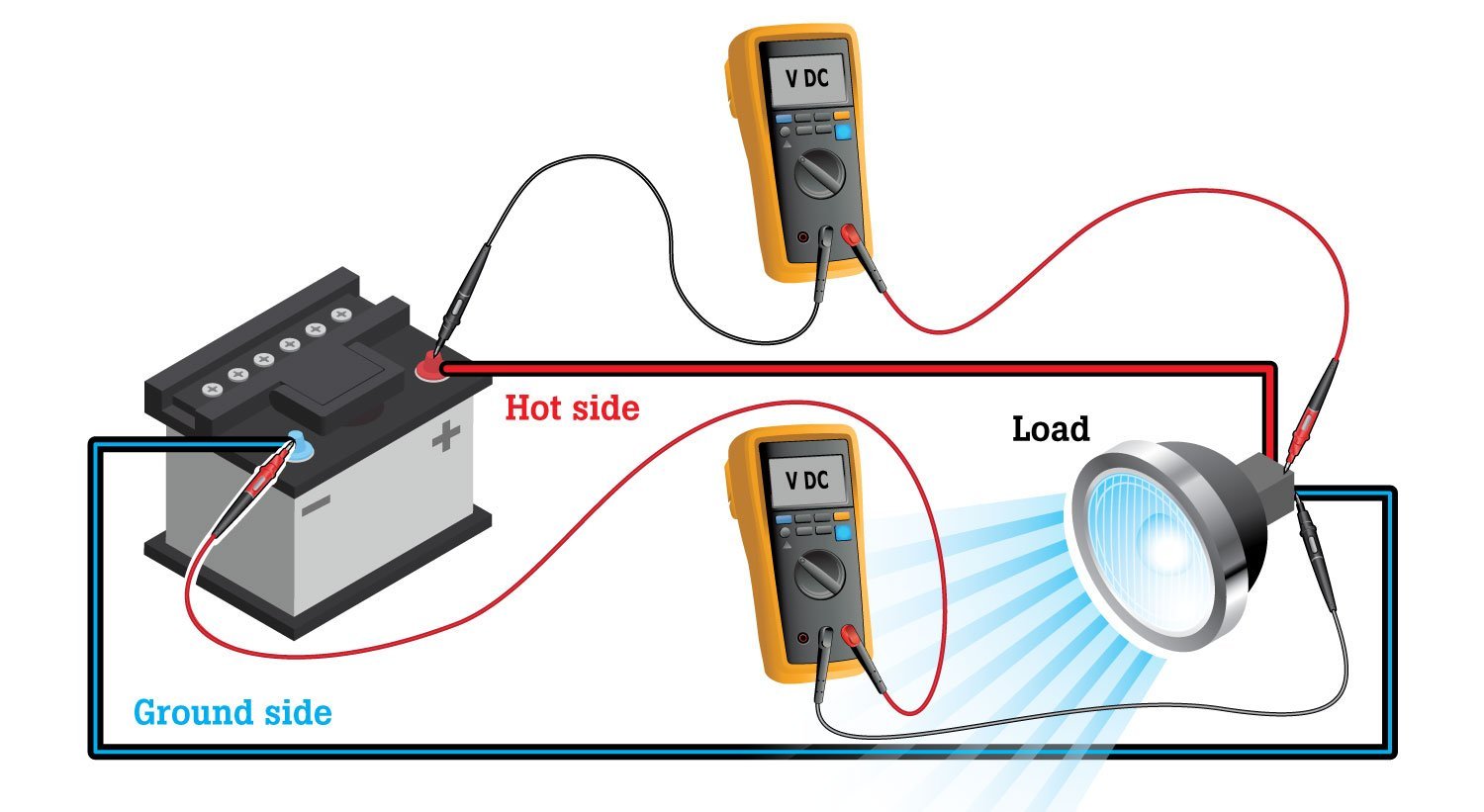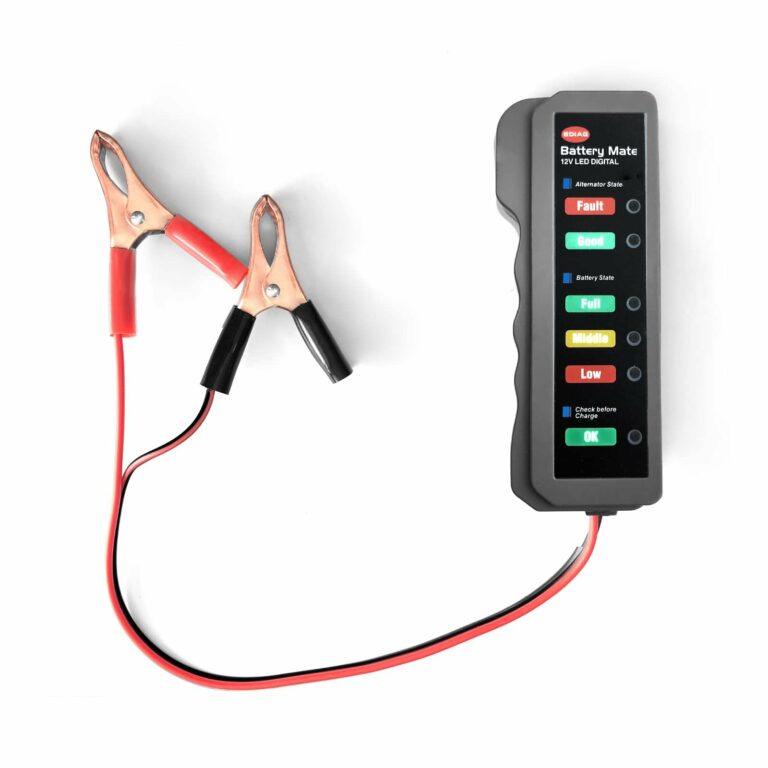Effective Methods: How To Test A Car Battery For Voltage Drop
Today we discuss How To Test A Car Battery For Voltage Drop. We’ve got you covered! If you’ve been experiencing issues with your vehicle’s electrical system, a voltage drop test can help you identify whether the battery is to blame.
By measuring the voltage difference between the battery’s positive terminal and various points in the circuit, you can determine if there’s excessive resistance causing a drop in voltage. In this article, we’ll walk you through the step-by-step process of testing your car battery for a voltage drop, so you can diagnose and address any potential issues with ease. Let’s dive in!
How to Test a Car Battery for a Voltage Drop?
Car batteries are an essential component of any vehicle, providing the necessary power to start the engine and operate various electrical systems. However, over time, batteries can lose their charge or become damaged, leading to issues with starting the car or powering its accessories. One common problem that can occur is a voltage drop in the battery, which can affect its performance and lifespan. In this article, we will explore various methods to test a car battery for a voltage drop and ensure its optimal functionality.
Understanding Voltage Drop in Car Batteries:
What is a Voltage Drop?
Before diving into the testing methods, it’s crucial to understand what a voltage drop is. A voltage drop refers to the reduction in electrical potential between two points in a circuit. In the context of car batteries, it indicates a decrease in the voltage output compared to its original rating. This drop in voltage can occur due to various factors such as internal battery resistance, loose connections, or high electrical load.
Signs of Voltage Drop in Car Batteries
Identifying the signs of a voltage drop can help you diagnose battery issues before they worsen. Here are some common indicators that your car battery may be experiencing a voltage drop:
- Difficulty starting the engine
- Dim or flickering headlights
- Slow or erratic power windows
- Malfunctioning dashboard lights
- Weaker sound system output
If you notice these symptoms, it’s essential to test your car battery to determine if a voltage drop is the culprit.
Tools Required for Testing:
To perform accurate battery voltage drop tests, you will need a few tools and equipment. Gathering these beforehand will ensure a smooth testing process. Here are the essential tools you should have:
- Multimeter: A digital multimeter is a versatile tool that measures voltage, current, and resistance. It will be essential for measuring battery voltage.
- Safety Gear: Remember to wear safety goggles and gloves to protect yourself from any potential electrical hazards.
- Clean Cloth or Wire Brush: You may need to clean battery terminals to establish good electrical connections during testing.
Step-by-Step Guide for Testing a Car Battery for a Voltage Drop:
Now that you have the necessary tools, let’s dive into the step-by-step process of testing your car battery for a voltage drop. Following these instructions will help you diagnose any battery issues accurately.
Step 1: Safety Precautions
Before starting any testing procedures, ensure that the engine is turned off, and the keys are out of the ignition. This precaution will prevent accidental electrical shocks during the testing process.
Step 2: Inspect Battery Connections
Begin by visually inspecting the battery connections. Look for signs of corrosion, loose cables, or damaged terminals. If you notice any of these issues, clean the terminals using a clean cloth or wire brush. Ensure that the connections are tight and secure.
Step 3: Set Up the Multimeter
Turn on your multimeter and set it to the DC voltage mode. Most car batteries operate at 12 volts, so select a voltage range that can measure up to this value.
Step 4: Measure Open Circuit Voltage
To measure the open circuit voltage, connect the multimeter’s positive (red) lead to the positive terminal of the battery and the negative (black) lead to the negative terminal. Record the voltage reading displayed on the multimeter. A fully charged battery typically has around 12.6 volts.
Step 5: Start the Engine
Start the engine and keep it running throughout the testing process. This will help simulate real-world conditions and provide more accurate readings.
Step 6: Measure Voltage Across Battery Terminals
With the engine running, touch the multimeter’s positive lead to the positive battery terminal and the negative lead to the negative terminal. Note the voltage reading displayed on the multimeter. Ideally, the voltage should remain stable and close to the initial open circuit voltage.
Step 7: Introduce Electrical Load
To test the battery’s performance under load, turn on various electrical components such as headlights, air conditioning, or stereo system. Observe any significant drop in voltage indicated on the multimeter. A voltage drop of more than 0.5 volts may indicate weak battery cells or high internal resistance.
Step 8: Analyze the Results
Based on the voltage readings obtained during the test, you can determine the overall health of your car battery:
- If the voltage remains steady and within an acceptable range (typically above 12 volts), your battery is in good condition.
- If you notice a significant voltage drop (more than 1-2 volts) when introducing electrical load, it may indicate a weak battery or charging system issues.
- In case the voltage drops below 10 volts or fluctuates erratically, your battery likely needs replacement.
Additional Considerations for Battery Testing:
Regular Maintenance
Performing regular battery maintenance is crucial to prolong its lifespan and prevent voltage drop issues. Here are some maintenance tips:
- Keep battery terminals clean and free from corrosion.
- Tighten loose connections and cables.
- Protect the battery from extreme temperatures.
- Avoid overloading the electrical system.
- Charge the battery fully if the vehicle will be idle for an extended period.
Professional Assistance
If you are unsure about testing the battery yourself or suspect more significant electrical problems, it’s always advisable to seek professional assistance. Automotive technicians have the expertise and tools to diagnose complex battery issues and ensure accurate repairs.
Voltage Drop Test
Frequently Asked Questions
How do I test a car battery for a voltage drop?
To test a car battery for a voltage drop, follow these steps:
What equipment do I need to test a car battery for a voltage drop?
You will need a digital multimeter, which can measure voltage, to test a car battery for a voltage drop. Additionally, you may need safety gloves or protective eyewear.
Can I test a car battery for a voltage drop without a multimeter?
No, a digital multimeter is necessary to accurately test a car battery for a voltage drop. It provides precise voltage readings, allowing you to identify any drop in voltage.
How do I interpret the voltage readings when testing a car battery for a voltage drop?
When testing a car battery for a voltage drop, a fully charged battery should read around 12.6 volts. If the reading drops significantly when certain electrical loads are applied, it indicates a voltage drop and may indicate a problem with the battery or charging system.
What are common causes of voltage drop in a car battery?
There are several common causes of voltage drop in a car battery, including loose or corroded battery terminals, a faulty alternator, or a weak battery that needs to be replaced. It is important to identify the underlying cause to resolve the voltage drop issue.
How often should I test my car battery for a voltage drop?
It is recommended to test your car battery for a voltage drop periodically, especially if you notice any signs of battery-related issues such as slow cranking or dimming lights. Checking the voltage regularly can help detect potential problems early on.
Final Thoughts
In conclusion, testing a car battery for a voltage drop is crucial in ensuring its proper functioning. By following the steps outlined in this article on “How to test a car battery for a voltage drop,” you can easily assess the health of your battery and identify any potential issues. Regularly monitoring the voltage drop can help prevent unexpected breakdowns and extend the lifespan of your battery. Remember to use a multimeter and check for any significant difference in voltage when the engine is running versus when it is off. Keep your car battery in optimal condition for a reliable and efficient driving experience.



